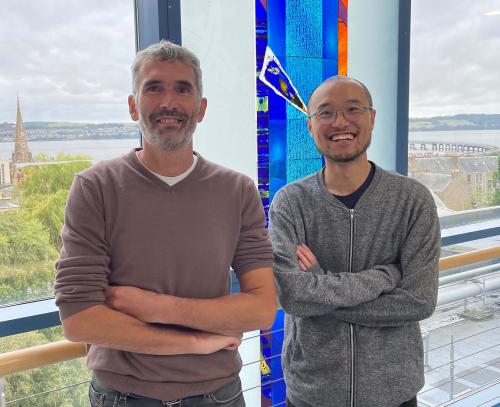
Eukaryotic cells make a single copy of their chromosomes before cell division, to ensure that the genetic blueprint can be passed on intact from one generation to the next. The molecular machinery that copies chromosomes is called the replisome and is built around an 11-subunit DNA helicase called CMG (CDC45-MCM-GINS), which unwinds the DNA duplex to allow DNA polymerases to copy the genome. The CMG helicase is assembled at many sites along each chromosome, in a highly regulated process that can only occur once during the life of each cell. Defects in CMG helicase assembly are associated with early development of many human cancers, and mutations in CMG or its assembly factors lead to a form of microcephalic primordial dwarfism called Meier-Gorlin syndrome.
Until now, our understanding of CMG helicase assembly was largely founded on studies of budding yeast, for which the process of chromosome replication can be reconstituted in vitro with a large set of purified proteins that are conserved in most other eukaryotes including humans. However, in a new study just published in Science, Yisui Xia and Remi Sonneville from Karim Labib’s group have found that a factor called DONSON is required for assembly of the CMG helicase in animal cells. This was very unexpected, since DONSON is absent from yeast, but mutations in human DONSON are associated with Meier-Gorlin syndrome, suggesting a link to CMG helicase biology.
Yisui & Remi discovered that the orthologue of DONSON in the nematode Caenorhabditis elegans, known as DNSN-1, binds to components of the CMG helicase and is essential for chromosome replication. With help from Constance Alabert in Dundee’s School of Life Sciences, they found that DNSN-1 acts right at the beginning of the replication process and is essential for assembly of the CMG helicase. To understand how DNSN-1 works, Yisui & Remi collaborated with Michael Jenkyn-Bedford in the group of Joe Yeeles at the MRC Laboratory of Molecular Biology (MRC LMB) in Cambridge, to solve the structure of C. elegans DNSN-1 bound to the CMG helicase, using a combination of cryo-electron microscopy and AlphaFold Multimer. This indicated that DNSN-1 functions as a dimer and is required to recruit a sub-assembly of the helicase known as GINS to chromosomes during the process of CMG helicase assembly.
This discovery represents a breakthrough for our understanding of how animal cells copy their chromosomes and suggests a mechanistic explanation for why mutations in human DONSON are associated with Meier-Gorlin syndrome.
The paper was published on 17th August in Science and can be found here

